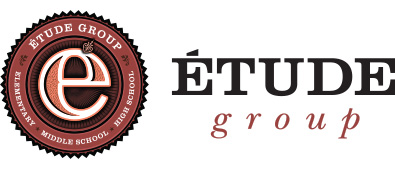In our busy world, we rarely take the time to look closely to see things that often go unnoticed. Much can be learned when we slow down and really look at something. As one of our Habits of Mind, observation is essential to learning. Observation requires students to intentionally slow down and look closely to see details. From these details students start to form patterns and make connections. This leads to understanding not only the details they see, but how these parts interact systematically to form the whole. In projects at ESAA, observation can be found throughout the creative process. Observation is a form of research and discovery. Students use the details they uncover to wonder, think deeply, and analyze. These observations help students understand the complexities of the world around them.
To learn about Wisconsin landforms, second and third grade students participated in field experiences. They visited the Pigeon River, Kohler Andrae State Park and the Kettle Moraine area. Students were given field journals to record their observations and make connections and comparisons. At each site they were asked to participate in thinking routines to help them look closer. Teachers use Harvard's Project Zero thinking routines as a structure to focus and deepen thinking within their classrooms. Students participated in a See-Think-Wonder thinking routine during each of the field experiences. See-Think-Wonder allows students to look closely, develop their thinking and ask questions about what they see. The second and third grade students used their observations to focus their inquiry about the landforms. After returning to their classrooms students use the questions they developed during the field experience to drive their text research. This research was also used to support the claims they made about what they saw. On the Kettle Moraine Trail, students were asked to participate in Looking 10 x 2 thinking routines. In this routine, students look closely and record 10 things they see. They share these with others and then look again and record ten more. The second round of ten observations require the students to look closer and notice the details. They repeated this thinking routine in several places along the trail. These observations helped them make meaning of the landforms by comparing their observations and making claims about the how the different landforms may have been made. The second and third grade students will use their drawings and writings from their field observations, along with the knowledge gained from text research, to create maps of the areas they visited. The close looking while at Pigeon River, Kohler Andrae State Park and the Kettle Moraine area will be evident in the detail of the maps.
Observation also has a role in evaluating and refining student work. Students evaluate the thinking and creating they have done at several stages throughout projects and make changes to refine their projects. Peers also help students to refine their work through feedback. Students look closely at their peer’s work in order to help them revise and refine specific area of their projects. This process of close looking, evaluating, and revising makes the student work more authentic.
In kindergarten, students look closely at photographs of insects in order to create scientific drawings. They start by looking at shapes and parts of the insect. They then draw what they see. Observation is also used to give feedback on the drawings. As a whole group the class looks closely at the photograph of the insect, compares it to the student drawing, and gives feedback about what they see. Students use a protocol to give warm feedback to area of the drawing they value because of the accuracy. They also give cool feedback to a specific area that may need improvement. The student then revises the drawing. This iterative process happens multiple times until the class, along with the student, observes that the drawing resembles the photograph.
Details emerge when students look closely. These details are parts of a whole. Observation helps students think deeply and ask questions about how the parts, their purposes, and interactions work together to form a whole. Developing this Habit of Mind guides students throughout their lives to be curious, ask questions, and help make sense of their world.


